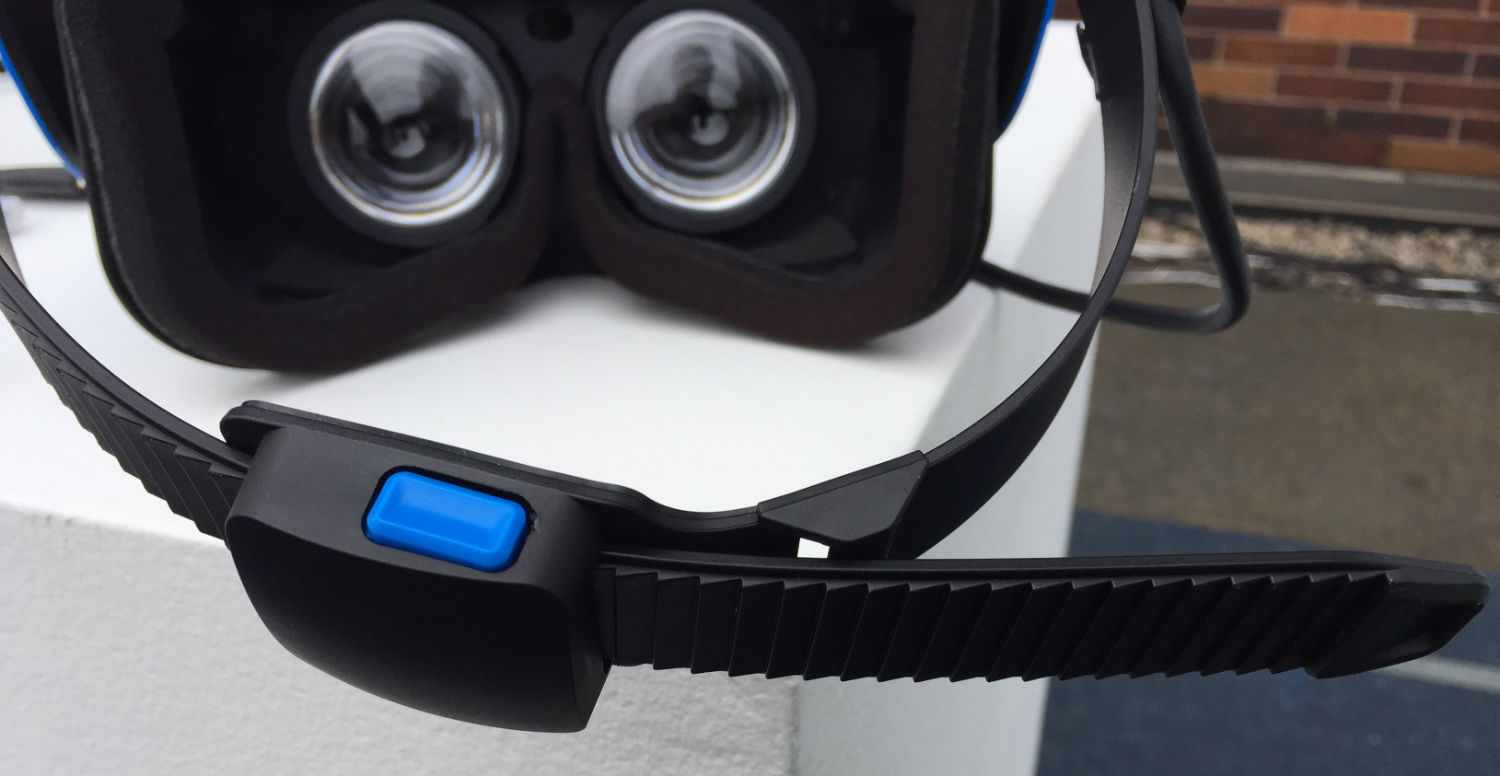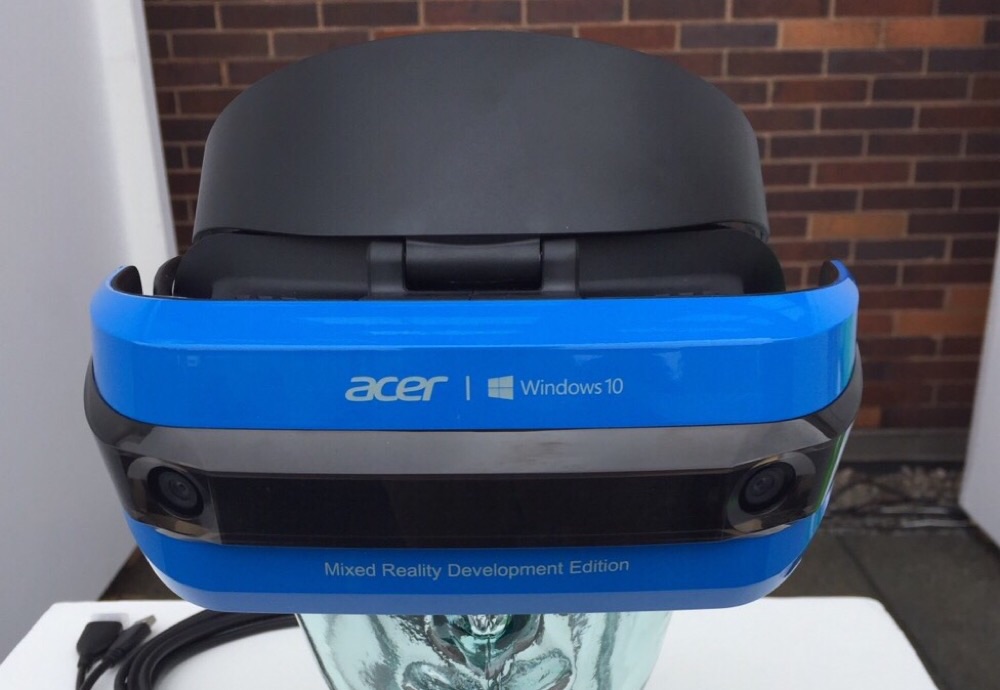The HP Windows VR headset is in our hands — you can see tons of pictures and read over 2,000 words of our thoughts (plus a full 9-minute video exploring the home space) to get an idea for what it’s like. But we don’t have the Acer version just yet (you can read some thoughts on the device here from back in April though.) The HP and Acer headsets are the only dev kits currently shipping for the Windows VR platform (Asus and Dell are coming soon) so tons of people are getting their hands on both right now. Our Acer should arrive any day now, but until then, we decided to reach out to the immersive technology development community to see what they think so far.
We spoke with three different developers that have all had their hands on the Acer Windows VR dev kit for some time now and they were all kind enough to share their thoughts. If you’d rather see it in video form then you can see a thorough impressions video from developer and author Sean Ong. His book, “Beginning Windows Mixed Reality Programming: For HoloLens and Mixed Reality Headsets,” is available now.
“The Acer is definitely one of the lightest headsets on the market, giving it a special edge when using it over longer periods of time,” writes Ong via Twitter Direct Message. “It’s lighter than the HP mixed reality headset, and FAR lighter than the Rift or Vive. It’s got a fun, approachable robotic retro look and feel. The head strap is probably my least favorite part of the Acer. The lack of padding on the rear of the head strap causes it to slip up over time, and doesn’t provide a secure fit, even when tightening it hard.”
Compared to the HP, which does cost ~$30 more, I can definitely see the inferior headstrap of the Acer sticking out. The padded visor design with adjustable knob on the HP really stands out as a big bonus in terms of wearability and comfort.
“There are only a handful of 1st party applications, and only one 3rd party application,” writes VR developer Nima Zeighami via Twitter Direct Message. “It’s a pre-release developer device.” Zeighami also explained that the facial interface “looks and feels cheaper” than that of either the Rift or Vive and the stability when tightened is much lower. Again though, it’s worth emphasizing that this is 100% a development device and is not targeted at consumers yet.
And due to the way that the inside-out tracking cameras function on the Acer headset, Zeighami explains that he found out the tracking “does not work” in a low-light room, only having success in a well-lit space. However, when well-lit, tracking was far from being an issue.
Many of the issues highlighted by Zeighami are echoed by Shachar “Vice” Weis, a software developer at Packet 39, blogger, and VR evangelist. “The unit is light (which is good) but feels really cheaply constructed,” writes Weis via email. “The strap is minimalist and not very comfortable, consisting almost entirely of hard injection molded plastic. The forehead rest has some cushioning, thank goodness.”
We’ve reached out to Microsoft about the possibility for running non-Windows apps and interfacing with the likes of SteamVR, but right now it seems unlikely. “Being Microsoft, the headset will only run UWP apps,” states Weis. “For anyone hoping for an OpenVR bridge or driver, this is a problem. UWP is all about layering, security and sandboxing. It might be very tricky to convince this headset to run OpenVR or SteamVR applications.”
And for a detailed tear down of components in the Acer Windows VR dev kit, check out this blog post from Shachar Weis.
One of the biggest barriers to entry for anyone interested in getting involved with the PC VR landscape right now is price (which the discounted Rift and these cheaper Acer and HP headsets will hopefully soften) and the need for a super-powered PC rig, which also comes back to price. Luckily, these Windows VR headsets aim to be much more accessible.
“One of the most amazing aspects of the Acer is that it can run on less-powerful computers,” writes Ong. “I’ve got it running on my Surface Pro 4 with integrated graphics and also my desktop using an old NVIDIA GTX 645 graphics card…The original message from Microsoft about these devices was about the low cost of entry and lower-end hardware required. I hope that original vision is realized.”
Overall, the Acer Windows VR headset seems to satisfy the desire for something super easy to setup and use, with serviceable performance and comfort, at a fraction of the cost of the Vive and Rift. Development is easy to get used to, especially for devs already familiar with the HoloLens ecosystem.
If you’re curious about the Windows VR platform itself then you can read more about that in my hands-on impressions of the HP headset right here. Both the HP and Acer support the same software and interact with your PC in the exact same way.
We’ll have a more detailed comparison of both the HP and Acer headset later this week. In the meantime, let us know your questions and thoughts down in the comments below!



























